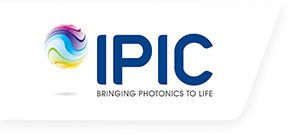Video Library
2021 Biophotonics Workshop – Clinical Applications of BioPhotonics
In this webinar, Dr. Carl Fisher discusses clinical applications of Biophotonics in categories of diagnostics and therapeutics. Dr. Fisher discusses case studies and technologies used in patient treatment such as Optical Coherence Tomography (OCT), Photodynamic Therapy (PDT), Photoacoustic Imaging (PAI), Fluorescence-guided resection; some of which developed by the Biophotonics team at the Irish Photonic Integration Centre (IPIC) and Tyndall National Institute.
2021 Biophotonics Workshop – BioPhotonics Where Light and Life Meet
Dr. Brian Wilson is Prof. of Medical Biophysics at University of Toronto, Canada; a Senior Research Scientist at Princess Margaret Cancer Centre in Toronto and a world-leading researcher in the biophotonics field. In his webinar, Dr. Wilson gives a big picture on the field of biophotonics by discussing (1) the advantages of light technologies for biological applications, (2) types of technologies and procedures in biophotonics, and (3) numerous applications divided into environment, food & agriculture, biomedical, (bio)security and forensic sectors.
2021 Biophotonics Workshop – Diffuse Optics
Diffuse optics is one of the main concepts of tissue optics. In this webinar, Dr. Sanathana Konugolu Venkata Sekar covers concepts of absorption, scattering and effective attenuation for setting the path for students to understand light transport in tissues. Concepts of this webinar are linked to computer simulations and the experiments of our biophotonics box, a kit designed for students to learn biophotonics through home experimentation.
BioPhotonics Against COVID 19 – 2021 Biophotonics Workshop
The COVID-19 pandemic has profoundly impacted the healthcare, political, economic and social sectors worldwide. Biophotonics has played a key role in remote disease monitoring and surface decontamination. The development of biophotonics technologies, presented in this video, was extremely accelerated given the need for rapid and precise COVID-19 tests, identifying suspect infected individuals, health monitoring, home healthcare and many other applications.
Biophotonics Kit Tutorial – 2021 Biophotonics workshop
Our biophotonics kit tutorial showcases experiments of an educational kit (biophotonics box) we have developed to provide educators a way to bring creative at-home experiments to students during the COVID-19 pandemic. The kit contains low-resource components and does not require access to a computer to run experiments, with the aim to encourage students to pursue a career in biophotonics or related areas of science.
2021 Biophotonics Workshop – Biophotonics at Tyndall
Prof. Stefan Andersson-Engels describes the opportunities and research activities of the Biophotonics Team at Tyndall, which focus on Impact and Scientific Excellence with the interaction between Tyndall and academic, clinical and business partners. Combination of the deep-tech expertise at Tyndall National Institute with biophotonics applications enable the work on projects involving novel technologies, collaboration with universities, industries, medical institutions and research excellence centers worldwide.
2021 Biophotonics Workshop – The Big Picture of Photonics
Biophotonics is the science at the convergence of light and biological matter. It is expected to play a key role in the next generation of diagnostic, analytical, and therapeutic modalities of the 21st century. Biophotonics was essential in the 2015 the International Year of Light, a global initiative to raise awareness of how light-based science and technologies provide energy, education, agriculture, and healthcare solutions worldwide.
Future of Light: Career Advice for Future Researchers
The International Day of Light (May 16th) is a global initiative that focuses on the role of light in science, culture and art, education, and sustainable development, and in fields as diverse as medicine, communications, and energy. Webinar 1, Career Advice for Future Researchers, features PhD students from IPIC sharing what they research and what advice they would give to anyone seeking a career in physics, engineering and most importantly photonics.
Future of Light Talk: Vision of Photonics in HealthCare
The International Day of Light (May 16th) is a global initiative that focuses on the role of light in science, culture and art, education, and sustainable development, and in fields as diverse as medicine, communications, and energy. Webinar 2, Vision of Photonics in HealthCare, focuses on the advancements we have made in healthcare and how photonics will impact this in the future.
Future of Light: How tiny light sources reshape the big world
The International Day of Light (May 16th) is a global initiative that focuses on the role of light in science, culture and art, education, and sustainable development, and in fields as diverse as medicine, communications, and energy. Webinar 3, How tiny light sources reshape the big world, delves into the world of micro-LEDs and their applications beyond lighting, such as displays, AR/VR applications and biomedical integration.
Future of Light: How lightwave communications and ‘the Cloud’ continue to shape our lives
The International Day of Light (May 16th) is a global initiative that focuses on the role of light in science, culture and art, education, and sustainable development, and in fields as diverse as medicine, communications, and energy. Webinar 4, examines the underlying optical communications network enabling today's high-tech services and all elements of infrastructure encountered by a mobile phone data stream.
Cork Literary Scientific Society – Miracles of unseeable light
The talk given Hemalatha Muthuganesan for “Cork Literary and Scientific Society” in March 2021, which explains how an invisible light brings internet to us. The presentation discusses different spectrums of light, with a particular emphasis on the application of infra-red light in broadband connections and provides a detailed explanation of how information is brought from data centres via optical fibers and the science behind light travelling in these optical fibers, which makes ultrafast internet connection possible.
Future of Light: The Future of Photonics and Light-based Technologies
The International Day of Light (May 16th) is a global initiative that focuses on the role of light in science, culture and art, education, and sustainable development, and in fields as diverse as medicine, communications, and energy. Webinar 5, The Future of Photonics and Light-based Technologies, brings together all the areas where photonics is currently impacting our everyday lives and how light-based technology will change the future.
RTE 10 Things to Know with Prof. Stefan Andersson-Engels
Prof. Stefan Andersson-Engels explains how the Science of Light is aiding Cancer Diagnoses and Lung function in Premature Babies to Kathriona Devereux. The interview is the first episode of RTE’s 10 Things to Know About new series, featuring the important research into the science of light that is being undertaken in Cork at SFI’s Irish Photonics Integrated Centre (IPIC) based at Tyndall.
Education and Public Enagagement
IPIC aims to bring photonics research into the light and promote an equal and diverse culture around physics, technology and engineering. This video highlights some of the reasons why our researchers enjoy Education and Public Engagement (EPE) and why we will continue to cast the light of knowledge into the future.
This video features quotes from the following researchers: Francesco Floris, Padraic Morrissey, Katarzyna Komolibus, Jack Mulcahy, Andrea Pacheco and Agnieszka Gocalinska.
This video features quotes from the following researchers: Francesco Floris, Padraic Morrissey, Katarzyna Komolibus, Jack Mulcahy, Andrea Pacheco and Agnieszka Gocalinska.
Single Mode Laser Characterisation
Video brought by the Monolithic and Heterogeneous Integration Theme at IPIC, as part of the IPIC 2020 Summer Bursary Programme initiative, discussing single-mode laser structures, simulations and characterization of Fabry Perot/Slotted Fabry Perot/2x2 MMI Laser/1x3.
Contributions made by John McCarthy, a 1st year Ph.D. candidate.
Contributions made by John McCarthy, a 1st year Ph.D. candidate.
Introduction to Photonic Integration Methods
Video brought by the Monolithic and Heterogeneous Integration Theme at IPIC, as part of the IPIC 2020 Summer Bursary Programme initiative, providing a general overview of the various methods used to integrate optical devices with the silicon photonic platforms to form a highly functioning photonic integrated circuit with the aid of micro transfer printing.
Introduction to Monolithic and Heterogeneous Integration Theme
An introductory video brought by Brian Corbett, the director of Monolithic and Heterogenous Integration Theme at IPIC. The Monolithic and Heterogeneous Integration Theme focuses on the development of a range of essential semiconductor materials as well as device and integration technologies, with a key objective being to find new ways to combine photonics and electronics on multiple substrates (silicon, ceramic, polymer etc.). This combination uses the transfer printing technology with unprecedented simplicity and cost-effectiveness.
Introduction to Micro Transfer Printing
Video brought by Monolithic and Heterogeneous Integration Theme at IPIC, as part of the IPIC 2020 Summer Bursary Programme initiative. Includes a brief introduction to silicon photonics and the need for its integration with active material, a summary of various heterogeneous integration techniques and advantages of Micro Transfer Printing over other methods, a detailed explanation on the principles of Micro Transfer Printing, the underlying theory, mandatory steps in executing the technique and areas of application.
What is Photonics?
Photonics is the study of light, which focuses on generating, controlling and detecting photons - the building blocks of light. Photonics is present in our everyday lives from the lighting in our streets and homes to the technology we use to communicate with each other. The Irish Photonic Integration Centre or IPIC, based at Tyndall National Institute in Cork, is a SFI research Centre for excellence and focuses on light-based technologies. IPIC’s research areas include medical devices, quantum technology, augmented reality, renewable energy and optical communications, amongst many other research topics.
Optical Coherence Tomography for Biological Imaging
Carlos Reyes is working in the Biophotonics research group of the Irish Photonic Integration Centre, located at the Tyndall National Institute. His research focuses on the set up and optimization of an optical coherence tomography station, which he built and assembled during his PhD project. Carlos is enthusiastic about applying the biomedical imaging to ex-vivo tissue samples or any other biological materials. Apart from that, his work requires him to use a number of mathematical software packages, such as MATLAB, LabVIEW and Python.
Communication Lasers using GaAs materials
GaAs based devices are emerging as a scalable, cheap alternative to the more commonly used InP based devices to achieve wavelength emission in the 1.3-1.55 micron range desired for data and telecommunication applications. In addition, GaAs-based lasers also have superior optical and carrier confinement, allowing for operation at higher temperatures. However, it is difficult to achieve larger than 1.3-micron wavelength emission due to the highly strained layers in GaAs. By employing a metamorphic buffer layer that follows a parabolic design, we demonstrate lasing at 1350 nm in GaAs-based lasers.






